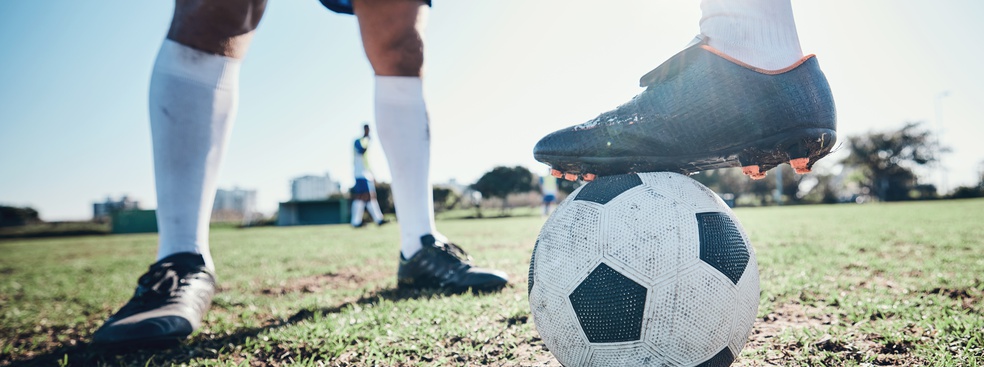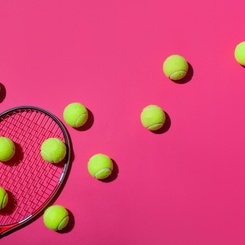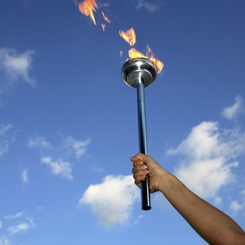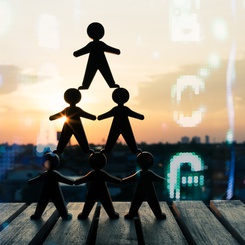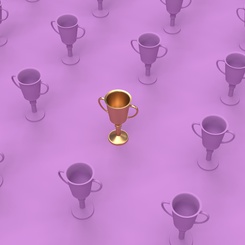With ESSEC Knowledge Editor-in-chief
Real Madrid’s vice captain, Dani Carvajal, recently spoke to Marca, a Spanish sports newspaper, about his new teammate, Kylian Mbappé: "I wish that he [Mbappe] won't have a good Euro, but that he will be his best version from August onwards".
Why was a team leader hoping a teammate wouldn’t play well? Because while they may be Real Madrid teammates, they’re facing off in Euro 2024 (UEFA European Football Championship), with Mbappé playing for France and Carvajal for Spain. Naturally, each will be doing their best to knock the other’s country out of competition - before joining forces again in August and once again playing shoulder to shoulder. This situation is common in sports, with teammates becoming rivals when playing for their countries instead of their club teams, and then going from rivals to teammates once again once the event is over. In 2024 alone, there are the Euros and of course the Olympics, meaning hundreds of professional athletes will be pivoting from teammate to rival and back in the span of a few months.
It’s a normal part of the sports world - and indeed of the working world. While you may not be in the running for a medal, you might find yourself in a situation where you’re going up against a colleague for the same outcome. For example, perhaps you, a software developer, and your scrum master are both in the running for local elections - but running for the same seat and for different political parties. What happens once you return to normal after having been competitors? Does this have a lingering effect on your work, even if you’re ostensibly back to sharing the same goals and the competition is behind you?
Maren Mickeler, an assistant professor of management at ESSEC, and co-authors Thorsten Grohsjean (Bocconi University) and Henning Piezunka (INSEAD) are exploring this question in their recent research project. They explored how this dynamic - working together for one organization, but having affiliations with other competing organizations - played out, looking at the example of professional soccer players.
Extra-organizational competition between colleagues sharing the same employer occurs frequently in the business world. For example, the research team found that when two members of a company’s C-suite were on other boards, they were on boards of competing companies in 20% of cases. The findings are not so surprising: employees of the same company often have similar profiles, making them sought after by similar firms - and if they’re similar firms, chances are they’re also competing firms. Even if we look below the C-suite, this may play out if coworkers are associated with different social groups or political parties outside of work. The frequency of this constellation means it’s crucial to understand its implications for collaboration.
If Kimmich and Kane play for FC Bayern Munich, then Kimmich plays for Germany and Kane for England during the FIFA World Cup, the researchers hypothesized that their extra-organizational competitive relationship (induced by their different national team affiliations) could have an impact on their interpersonal relationships when they are no longer competitors. Why? When people have something in common - a shared affiliation - they feel the other person is more similar to them and more likeable (1). If colleagues enter extra-organizational affiliations that create a competitive linkage between them, they may start to see the other as more “dissimilar”. Or, in other words, they can become more aware of what divides than what unites them.
For this to be the case, two conditions must be met: team members both need to identify with their additional affiliation and they also need to directly compete against each other in their extra-organizational roles.
Pitch perfect: unpacking team dynamics in top-tier teams
To analyze whether extra-organizational affiliations can cause harm to collaboration between colleagues, Dr. Mickeler and her colleagues analyzed the case of male professional soccer players, using data from the 2018 FIFA World Cup and the top five European leagues (England, France, Italy, Spain and Germany). They looked at players who played for the same club but different national teams - like former Real colleagues Raphael Varane and Luka Modric who faced each other in the World Cup for France and Croatia, respectively. Since players don’t control the match plan of a tournament, it means they don’t decide whether they will play someone who is a close colleague. It also means that a few short weeks after the competition, they’ll be back to being on the same side - with little transition.
In the soccer leagues’ regular season, each club plays the others twice, making for 306 matches for the German Bundesliga and 380 for the other European leagues. In the 2018 FIFA World Cup, held every four years, there were 64 matches total. Using match data from the sports analytics company Wyscout for all five major European leagues before and after the World Cup, the researchers studied the number of passes between teammates. This allowed them to compare how the number of passes changed for treated player dyads before and after the World Cup if they directly faced each other by comparing them with untreated dyads that did not play each other in the World Cup…
It turns out that it’s not so easy to go back to being friends after having been rivals. The researchers identified reduced collaboration (i.e. fewer passes) in those pairs that had faced each other during the World Cup. In other words, players that had played against each other for their respective national teams tended to pass the ball less frequently in the post-World Cup season compared to their pre-World Cup rates. They also passed the ball less frequently compared to players that had played for different national teams but not against each other - making the rivalry less salient for those players.
This effect started early and lingered considerably. Players started passing less frequently to their teammate/rival after the group stage announcement of the World Cup: so once they knew they would be playing against each other, but before it actually happened. Their identity played a role: the effect was stronger for players with only one citizenship or who had lived in the country for a longer period, compared to those with dual nationality (around 33% of players), and for those who were more vocal about their national team on social media. Their reduced collaboration continued throughout the whole post-World Cup season - suggesting that the effect doesn’t end immediately after the tournament. Taken together, this suggests that team dynamics can take a hit after a major tournament - and that this can last a while, meaning that players, coaches, and owners should be aware of the issue.
From the pitch to the professional world
We can’t all be a professional soccer player raking in millions - but this type of constellation occurs in different formats in the professional world, such as the C-suite execs on different corporate boards or two colleagues campaigning for the same political seat. The results of this study suggest that a period of competition undermines collaboration, an effect that seems to kick off once the competition has been announced and linger after the competition has wrapped up. This means that these results have implications off the pitch, and that companies should consider this to avoid negative consequences for team dynamics.
What should companies do?
-
Organizations and managers may want to consider keeping track of their employees’ extra-organizational affiliations to identify situations where their employees can turn into competitors, given the possible negative impact.
-
If employees hold competing affiliations, managers could consider discouraging the discussion of touchy topics to avoid an impact on teamwork.
-
Managers need to actively manage feelings of rivalry and dissimilarity between employees who compete outside their workplace by openly speaking about these experiences.
Reference
Sytch, M., & Kim, Y.H. (2021). Quo vadis? From the schoolyard to the courtroom. Administrative Science Quarterly, 66(1), 177-219.
